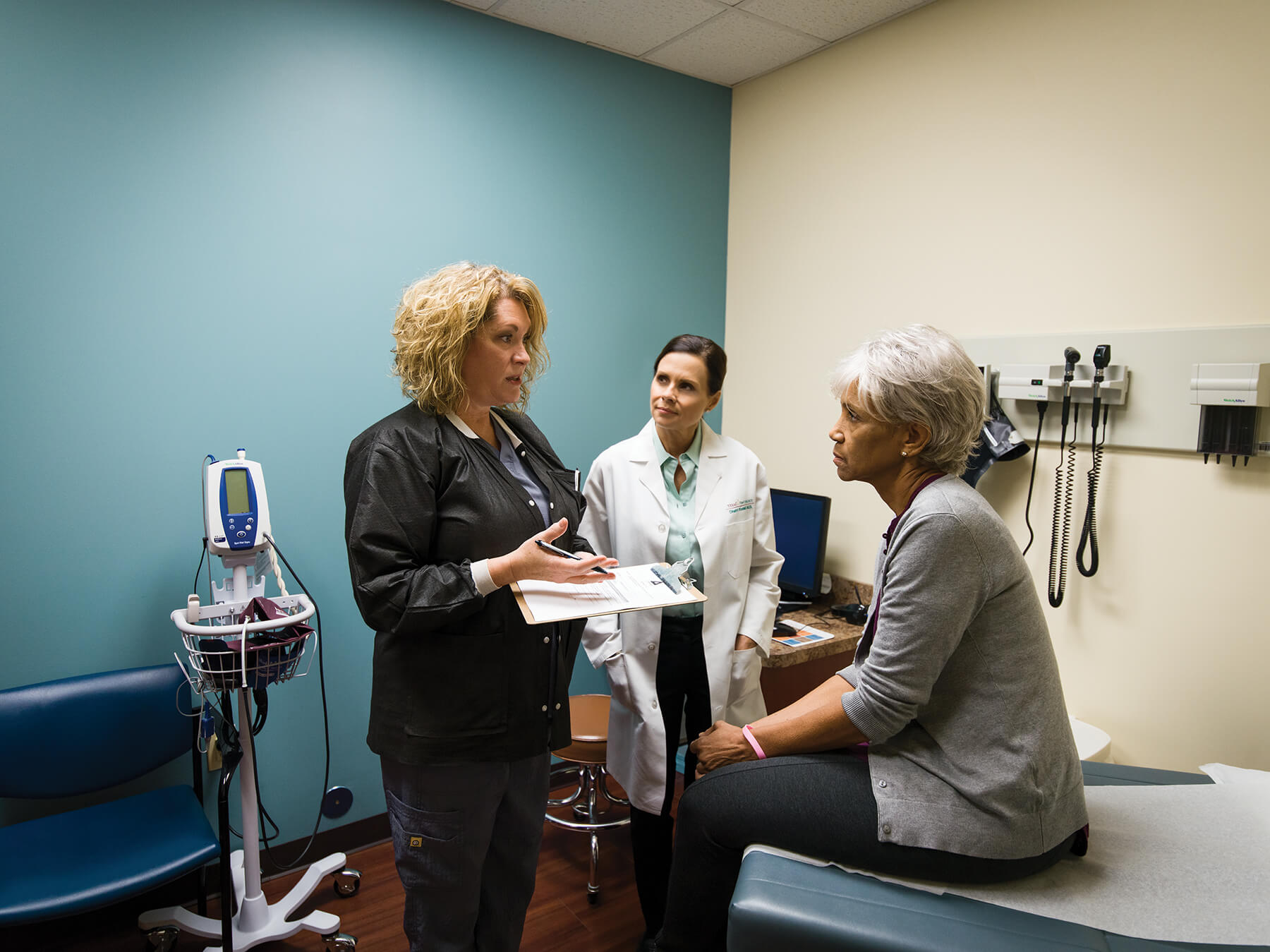« Back to Blog
Community-Based Cancer Care: A Better All-Around Value
By Diana Verrilli | November, 2017
Over the last several years, many promising new cancer therapies have come to the forefront. The pipeline of new cancer drugs has never been richer, and exciting new developments in radiation technologies are providing new innovative treatments that are more precise and effective than ever before.
Unfortunately, these potentially life-saving therapies come with a very high price tag. For instance, Opdivo, a drug that treats certain types of lung cancer after conventional chemotherapy has failed, costs about $150,000 for the initial treatment, and then $14,000 a month for ongoing therapy.1 The yearly outlay for Keytruda, an immune boosting therapy, totals over $152,000.2 New cancer drugs will be even more expensive in the future, as drug costs are projected to grow 7.5 % to 10.5 % annually through 2020.3 The price could easily reach several hundred thousand dollars for a course of treatment for many of the new drugs currently in clinical trials.
In 2014, the average annual cost of treatment for cancer patients was $58,097.4 As treatment costs rise, hundreds of thousands of patients are delaying care, cutting pills in half or skipping drug treatment entirely. A recent survey found one-quarter of all patients opted to not fill a prescription due to cost.5 Treatment costs can be astronomical for patients without insurance, and even those with insurance struggle to afford high copays, out-of-network care or treatments not covered by their plan.
The financial costs of cancer care are a burden on the healthcare system as well. A 2011 study in the Journal of the National Cancer Institute determined the cost of all cancer care in the U.S. totaled $124.5 billion in 2010,6 the most recent year data was available. National Cancer Institute researchers project the total cost of all cancer care in the U.S. will rise to $157.7 billion by 2020 due to increasing drug costs and a growing elderly population that is more likely to develop cancer.7 These escalating costs are taking a heavy toll on a healthcare system with limited resources.
The Solution: Cost-Effective, High Quality Community-Based Cancer Care
A multitude of clinical studies have verified cancer care delivered in a hospital outpatient department costs significantly more than care delivered in a community setting, without providing any meaningful improvement in quality of care or outcomes.8
The differences between chemotherapy costs in the two settings are striking:
- Private payer costs for chemotherapy in hospital settings were 76% higher than freestanding community cancer clinics9
- The average cost of an office-managed chemotherapy episode was roughly $28,200 while the average cost of a hospital-managed episode was $35,000, more than a 24 % difference10
- Medicare costs by site-of-service were $6,500 higher annually for chemotherapy treatment in outpatient hospital cancer facilities versus independent community cancer clinics11
- Between 2009 and 2012, Medicare beneficiaries paid $4.05 million more in out-of-pocket costs for chemotherapy services in a hospital setting than they would have paid for the same care in a community cancer practice12
A recent study found the cost of radiation therapy in hospitals versus freestanding community-based radiation oncology centers is also higher for the patient. For instance, for prostate cancer patients undergoing IMRT therapy, costs were $3,097 higher in the hospital setting than for the same therapy in a freestanding clinic.13 Three-dimensional conformal radiotherapy for breast patients was $600 higher in the hospital, while treatment for lung cancer with this same technology was $430 higher.14
Community Cancer Care: Better Value―Better Care
Community-based cancer care is a better all-around value for patients, payers and the entire healthcare system, providing many other benefits in addition to cost savings. Conveniently located in local communities where people live and work, patients do not have to travel long distances for access to some of the most advanced technologies, treatments and groundbreaking clinical trials available today. The close proximity to care also reduces ER visits and hospital admissions.
Community centers offer more personalized care than large hospitals, with care provided by one team of professionals who become familiar to the patient. In the hospital setting, patients often see different physicians, nurses and technicians throughout treatment. Community cancer centers also provide convenient access to ancillary support services, such as social workers, financial counselors and other support staff.
At a time when cancer care costs are rapidly rising and becoming unsustainable to the healthcare system, community-based cancer care is the clear choice for patients, providing better value while delivering advanced, comprehensive quality care close to home.
1 https://www.healthnewsreview.org/2015/12/opdivo-ads-vs-the-reality-of-stage-iv-cancer-treatment/
2 http://www.benefitspro.com/2016/05/10/the-role-of-critical-illness-insurance-in-the-new
3 http://www.cbsnews.com/news/the-ever-escalating-cost-of-cancer-drugs/
4 Ibid.
5 https://www.ncbi.nlm.nih.gov/pubmed/23442307
6 www.drugwatch.com/2015/10/07/cost-of-cancer/
7 Ibid.
8 MedPAC to report to Congress, June 2013
9 www.communityoncology.org/pdfs/avalere-cost-of-cancer-care-study.pdf
10 Ibid.
11 http://us.milliman.com/uploadedFiles/insight/health-published/site-of-se…
12 Berkeley Research Group, Impact on Medicare Payments of Shift in Site of Care for Chemotherapy Administration, June 2014
13 Avalere analysis of 2012 5% Medicare Outpatient Claims file. Any visit with a CPT code for radiation oncology was included. Analysis uses payments and packaging policies for 2014 and 2015P, and includes physician payments in both settings
14. Ibid.

